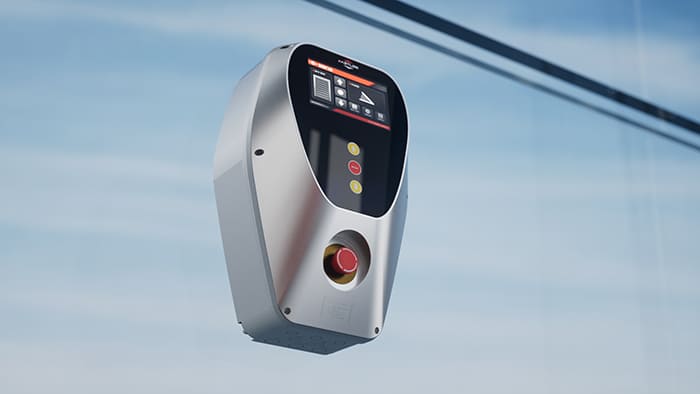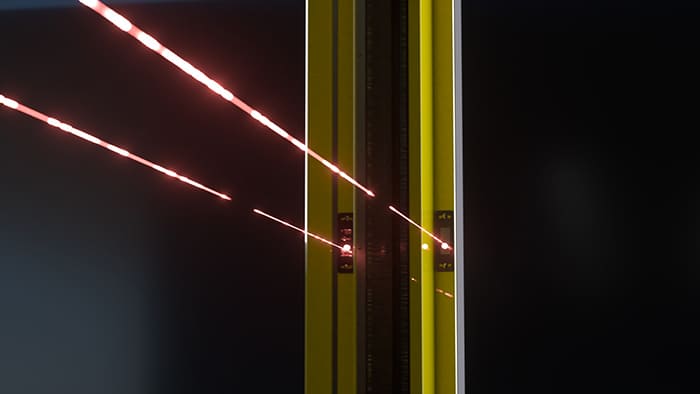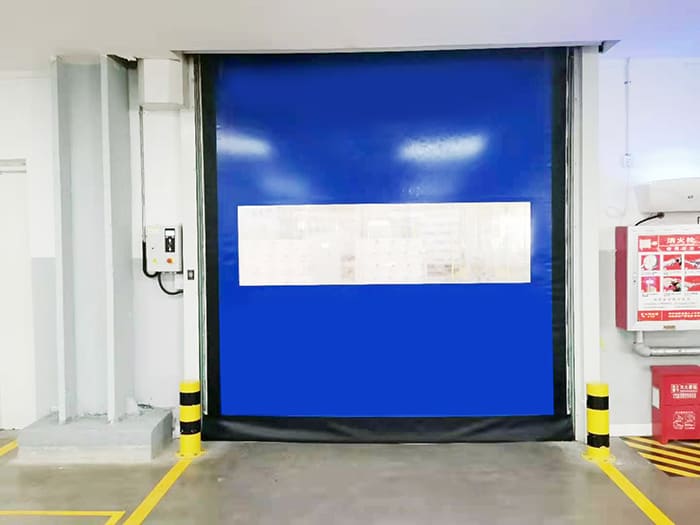
The curtain is guided by tensioning strips (zipper tracks) fixed within the side rails, maintaining proper tension and directing the curtain’s vertical motion. In the event of a collision, the tensioning strips will disengage automatically and reset via a self-recovery mechanism, protecting the door structure from damage. The motor, installed at the top of the door, typically includes a reducer or gear set and is controlled by a variable frequency drive (VFD) for soft start/stop. The control box houses a PLC or dedicated controller, VFD, and power circuitry, and its interface includes buttons such as open/close, emergency stop, and key switch for initiating and managing operations.
Opening and Closing Logic
When the control system receives an opening signal—triggered by a push button, sensor, or remote controller—the VFD activates the motor, causing the curtain to rise quickly. The curtain accelerates, transitions to uniform motion, and slows down as it nears the top position. A position sensor or limit switch then stops the motor, ensuring a fully open state.

The closing process follows a similar logic. Upon receiving a closing signal (manual command or timer), the curtain begins to descend. As it approaches the floor, the system reduces speed automatically and stops the motor precisely through a bottom limit switch. If a safety sensor (e.g., infrared beam or soft bottom edge detector) detects an obstruction during descent, the door will immediately stop and reverse to prevent injury or damage.
Control System
High-speed doors typically use a PLC or dedicated logic board for control. The controller receives input signals from devices such as buttons, pull cords, radar sensors, or ground induction loops. Based on programmed logic, it issues drive commands to the VFD and motor.

The motor speed is continuously adjusted by the VFD for smooth acceleration and deceleration. The controller also monitors travel sensors or encoders for precise position control and enforces software-based speed limits to ensure safe door operation. Upon receiving an emergency stop signal or safety input, the system immediately shuts down the motor and either halts or reverses the door movement.
Triggering Methods
 Common triggering methods include:
Common triggering methods include:
Radar Sensors: Installed above or beside the door opening to detect movement via microwave or millimeter-wave signals. Automatically triggers door opening when vehicles or pedestrians approach. Suitable for high-traffic or fast-moving targets.
Inductive Ground Loops: Embedded under the ground in front of the door. Detects changes in the magnetic field caused by vehicles and triggers opening. Highly sensitive and ideal for frequent vehicle access, such as forklifts or trucks.
Pull Cord Switches: A rope is installed beside the door or on a guardrail. Pulling it activates a microswitch to send an open/close signal. Economical and reliable for mixed pedestrian and vehicle use, but requires manual operation.
Remote Controls / Wall Buttons: Handheld remotes or wall-mounted push buttons initiate door movement. Remotes provide convenience for drivers; wall buttons require manual activation.
Other Sensors: Additional devices such as infrared eyes, photoelectric detectors, or laser-based virtual pull cords can provide touchless activation for advanced applications.
Safety Mechanisms
Multiple safety features are incorporated to prevent injury and equipment damage:

Infrared Beams / Light Curtains: Installed along the door frame to detect the interruption of the beam during closure. If obstructed, the system immediately stops and reverses the door.
Soft Bottom Edge: The flexible lower beam is equipped with a wireless detector or pressure sensor. Upon contact with an obstacle, it deforms slightly and signals the control system to reverse immediately, preventing pinching.

Collision Release & Auto-Reset: If a vehicle collides with the curtain, the tensioning strips may disengage to avoid structural damage. A reset mechanism then automatically guides the curtain back into the side tracks.
Emergency Stop & Alerts: Control panels typically include an emergency stop button to cut power instantly. Flashing lights and audible alarms warn personnel during door operation.
Fastlink excels in delivering intelligent entrance solutions with a diverse product portfolio, including Spiral High Speed Door, Interior/Exterior High Speed Rolling Shutter Door, Cold Storage High Speed Rolling Shutter Door, Cold Storage High Speed Sliding Door, etc. designed for logistics, manufacturing, and food cold chain applications. Its products are distinguished by advanced German production lines, patented technologies, and certifications like CE and UL, ensuring compliance with international safety and quality standards.









